Create an Inventory Management System In 3 Steps
Create an Inventory Management System: A Quick & Easy Guide
Managing inventory can be challenging. Many small businesses overly rely on spreadsheets or the backend systems of Shopify and other e-commerce platforms. These solutions often fall short, leaving you with a pseudo inventory system that isn’t truly effective.
That’s why we’re here to guide you in building your own inventory management system, allowing you to move away from outdated and unorganised processes.
What Is an Inventory System
An inventory management system allows you to track your goods throughout your entire operation. This allows you to identify the right quantities of items required to meet demand. Whether you operate a brick-and-mortar store or an e-commerce site, efficient inventory management is crucial and without a system tailored to your needs, you risk losing valuable stock and money.
Why Spreadsheet Inventory Management Systems Fall Short
While spreadsheets might work on a basic level, they come with significant drawbacks. Human errors in data entry can turn into major issues. Without clear ownership or version control, changes made by different staff members can be lost or duplicated, especially if the person responsible for updates leaves the company.
As your reporting needs grow, so does the size of your spreadsheets. This leads to slower performance and makes it increasingly difficult to locate specific inventory items, often resulting in wasted time.
Spreadsheets also lack security features to protect against unauthorized access. Excel and Google Sheets do not natively support user roles, authentication, or granular access control. In contrast, an inventory management system built with Five provides these capabilities, ensuring your data is secure.
Using spreadsheets for inventory management can undermine the goal of having a single, reliable source of truth. Instead of efficient inventory management, you end up dealing with multiple spreadsheets, constantly managing and correcting errors. By transitioning to a dedicated inventory management system, you can enhance efficiency and accuracy, ultimately improving your business operations.
How Do I Build an Inventory Management System
There are several ways to build your inventory management system. You can code it from scratch, purchase an off-the-shelf system that may not fully adapt to your specific needs, or use a web application builder like Five, which specializes in inventory management systems.
Using a builder like Five gives you access to highly customizable features tailored to your inventory management needs.
1. Easy Data Transfer: Five allows you to seamlessly transfer your data from Excel or Google Sheets to your new cloud-based inventory system. There’s a handy tutorial called “Excel to Web App” to guide you through the process.
2. Quick Setup: You can set up your custom inventory system in minutes, avoiding the hundreds of hours required to learn various coding frameworks and languages.
3. Customization: Unlike off-the-shelf systems that lack flexibility, Five lets you add custom features to meet your specific requirements. If you need a unique functionality, Five can accommodate it, ensuring your system fully supports your operations.
4. Advanced Features: Five provides the ability to create custom business logic with code, generate stocktake or inventory PDF reports, and visualize your data through custom charts and graphs.
5. Notifications: You can set up email notifications for low stock items, keeping you organized and preventing stock outs of essential inventory.
By using Five, you can build a personalized inventory management system that improves your operations and adapts to your unique needs.
Get free access to Five here and start building the inventory system to improve your operations.
Steps to Create an Inventory Management System
In this step by step we’ll focus on taking your previous spreadsheet data and building your inventory system. If you don’t have a previous spreadsheet that’s even better. Download the sample inventory management system below, import it and start developing in Five straight away. To import your application follow these steps.
To follow the below tutorial you’ll find to get free access to Five.
Step 1: Prepare Your Spreadsheet
Before building our inventory web app, it’s crucial to format your Excel spreadsheet correctly.
Key Preparation Steps:
- Descriptive Header Row: Ensure the first row of your spreadsheet contains descriptive names for each column. For example, columns might be labeled as “Product”, “Price”, and “Quantity”.
- Avoid Redundant Columns: Do not repeat information across multiple columns. For instance, instead of having separate columns for “Products (non-perishable)” and “Products (perishable)”, use one “Product” column and another for “Perishable/Non-Perishable”.
- Single Data Points: Each cell should contain only one piece of data. Avoid combining information such as “5.99 (discounted to 4.99)”.
- Separate Multiple Values: If an item has multiple values, like several email addresses, use separate columns for each (e.g., “Primary Email”, “Secondary Email”).
Useful Excel Commands for Cleaning Data:
- TRIM: Removes extra spaces from text entries.
- CLEAN: Deletes non-printable characters.
- PROPER: Capitalizes the first letter of each word and converts the rest to lowercase.
Checklist for Clean Data:
- Header row contains descriptive names.
- Columns have unique and relevant information.
- Each cell contains one piece of data.
- Multiple data points are split across columns.
- Data is cleaned using Excel functions.
Step 2: Setting Up Your Database and Importing Data
Now that your spreadsheet is prepared, let’s move on to setting up your inventory database using Five.
Steps to Set Up Your Database:
Create a New Application in Five:
- Sign up for Five and access the application dashboard.
- Click on “Applications” and then the yellow plus icon to create a new application.
- Give your application a title like “Excel to Inventory System” and save.
Build Your Database:
- Click on “Manage” near the Five logo.
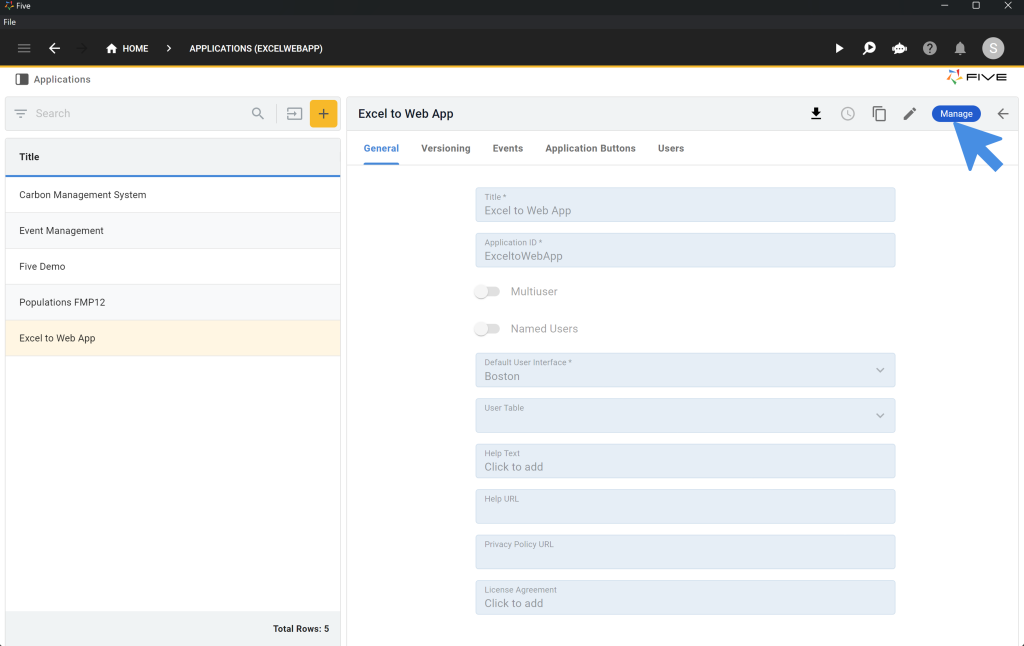
- Go to “Data” and select “Table Wizard”.
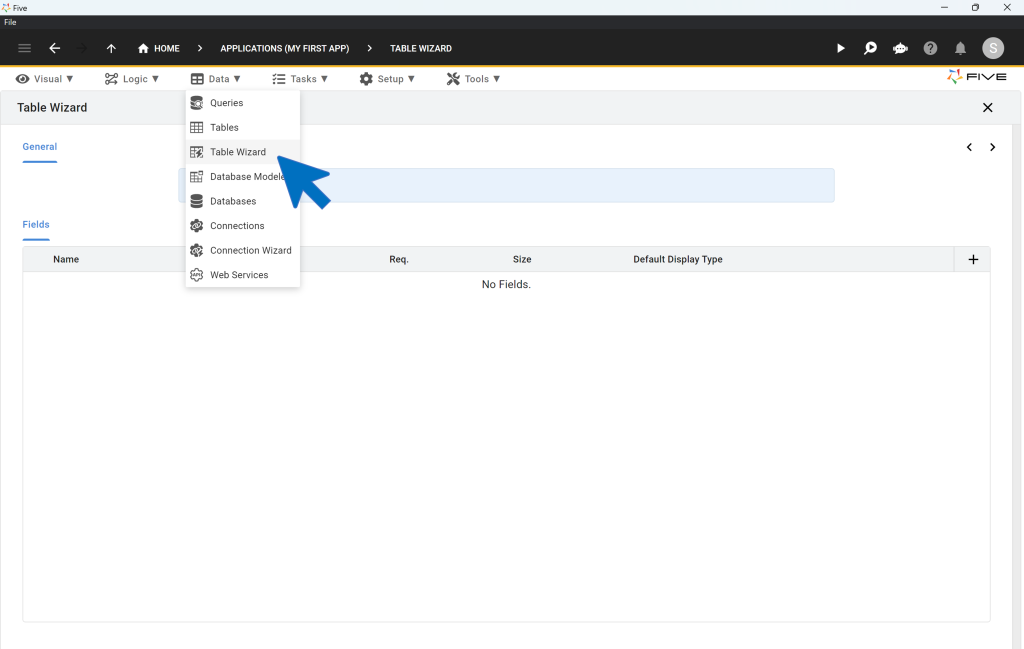
- Create your first database table with fields such as “Product” (text), “Price” (float), “Quantity” (integer), and “Total” (for calculations).
- Save the table setup.
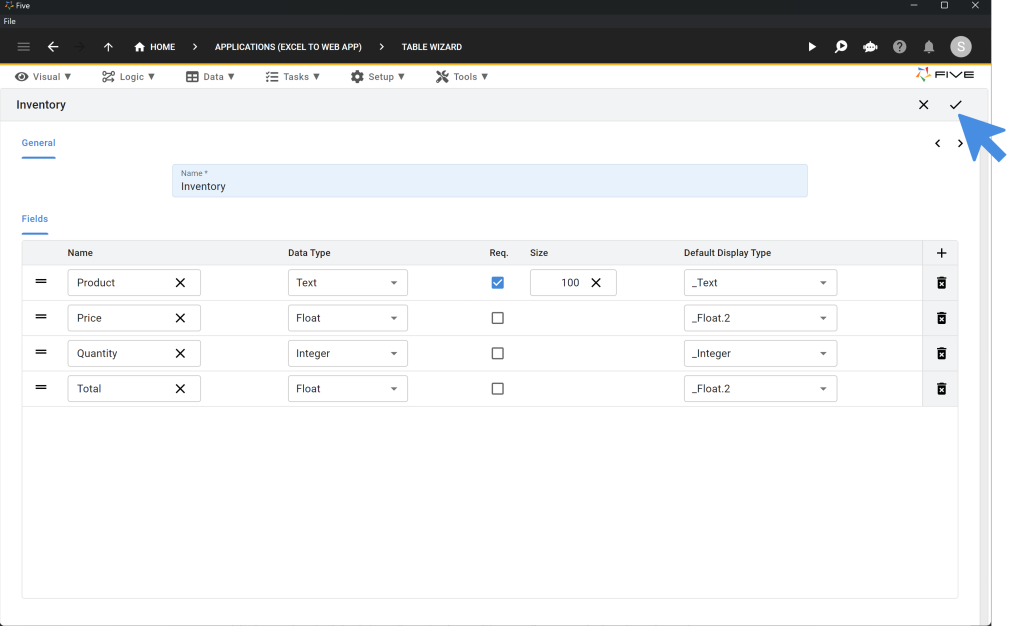
Import Your Data:
If you’d like to use the sample data provided
- Go to “Data” > “Tables” and select “Import CSV into Table”.
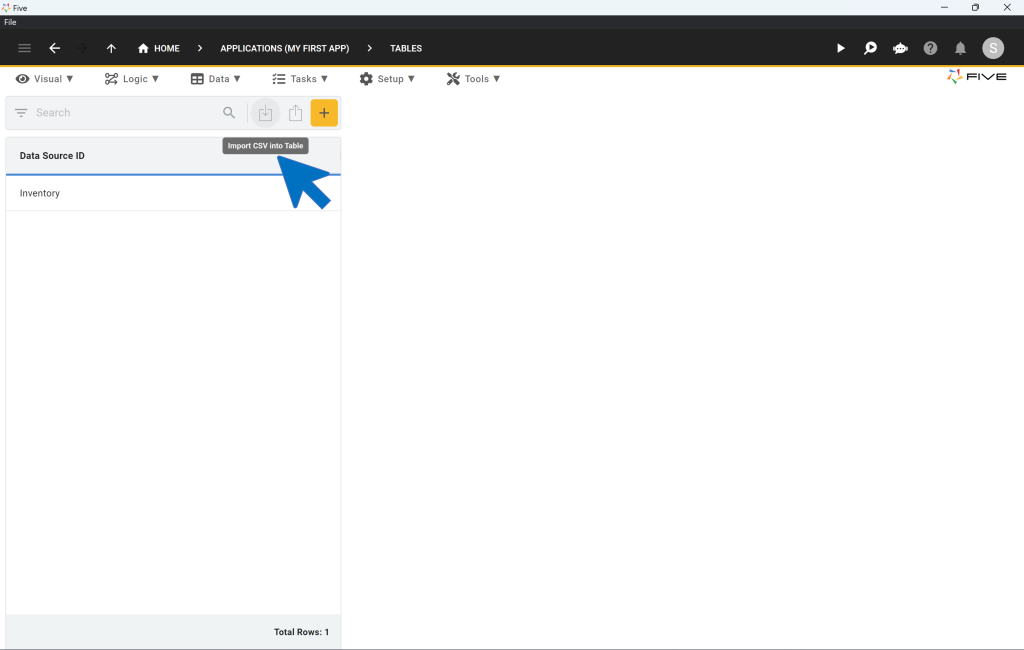
- Upload your CSV file (converted from your spreadsheet data).
- Map CSV fields to database fields, ensuring accurate data import.
- Click “Tick” to upload the data.
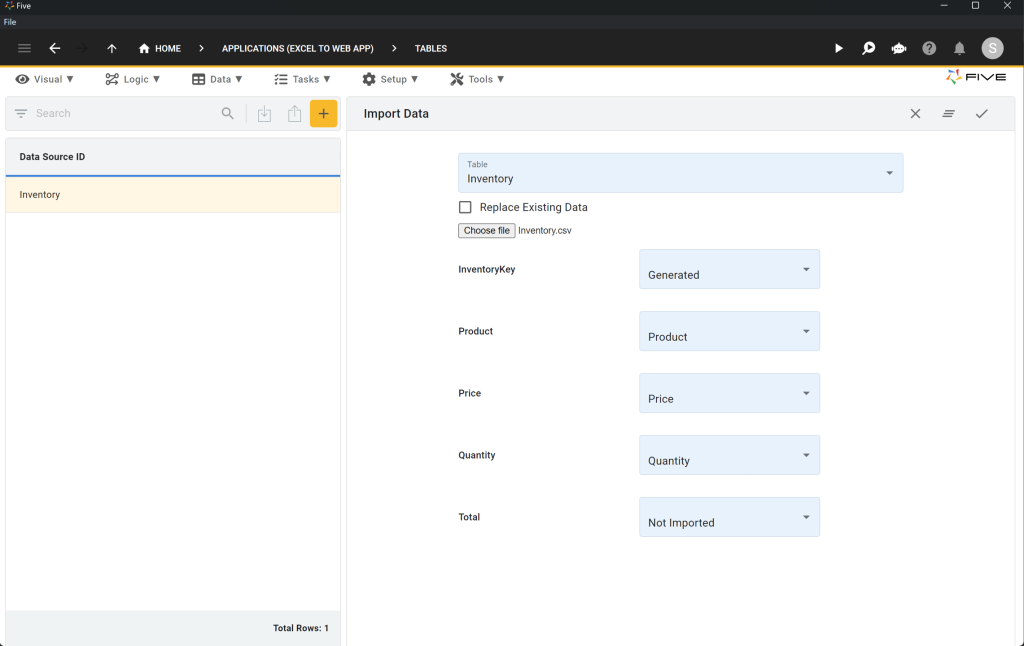
Step 3: Adding a Form and Previewing Your Application
With your database ready, the next step is to create a user-friendly interface.
Steps to Add a Form and Preview:
Adding a Form:
- Click on “Visual” and then “Form Wizard”.
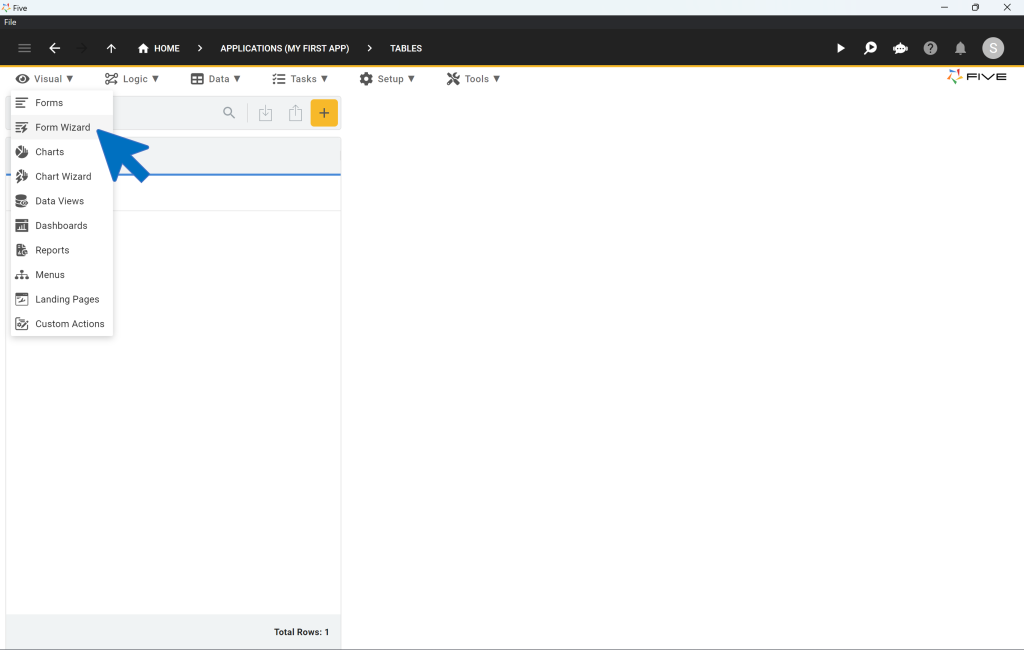
- Select your main table (e.g., “Inventory”) and save.
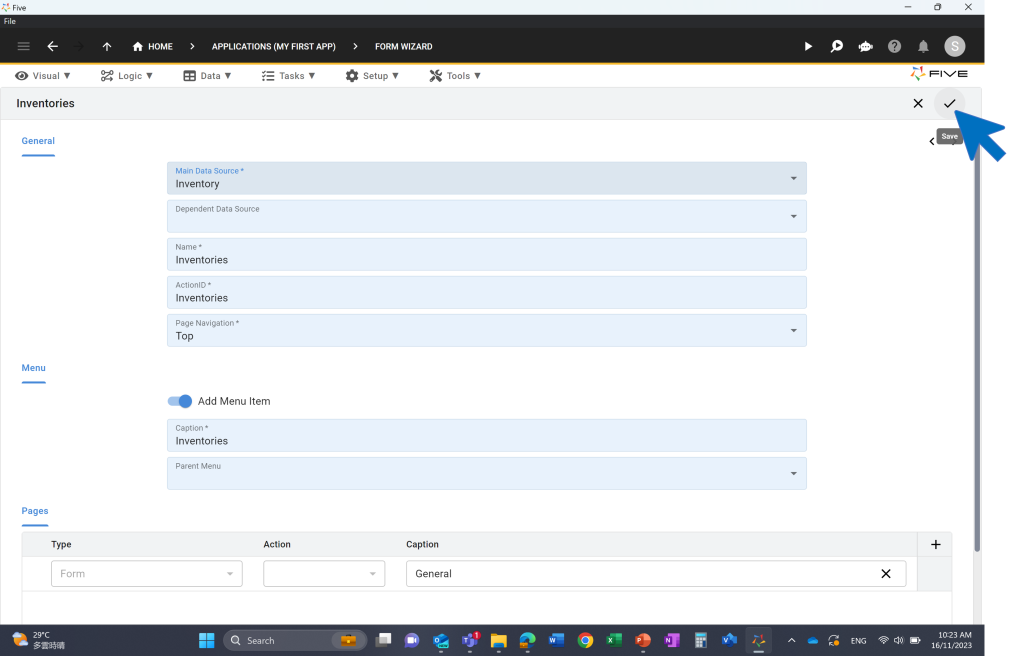
Preview Your Application:
- Click the “Run” button at the top right. If it’s not visible, activate it by clicking deploy to development
- Once deployed, click “Run” again to launch and preview your application.
Your application should now display a fully functional front-end, complete with:
- A menu on the left,
- A search bar at the top,
- Filters for data,
- Options to add, edit, or delete records.
Congratulations! You have successfully converted your spreadsheet into a inventory system with a searchable online database. Continue enhancing your app by following the subsequent steps in these tutorials.
- Part 2: Inventory System – Calculating a Field
- Part 3: Inventory System – Adding a Theme
- Part 4: Inventory System – Adding Logins to Your App
- Part 5: Inventory System – Creating Charts and Dashboards
Check out this screenshot of a finished application to get a sense of what’s possible:
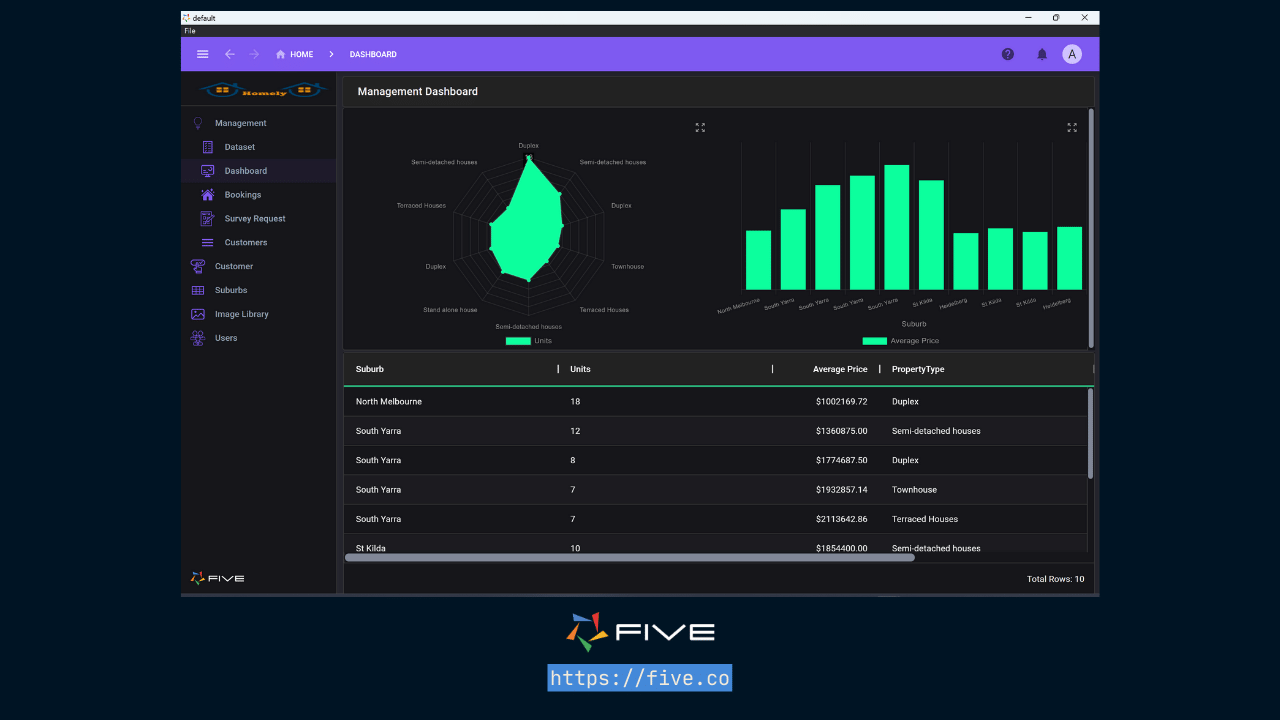
Finding Help in Five
In case you get stuck during the development process, we’re here to help! Continue developing your application by accessing these resources:
- Five’s User Community: Visit https://five.org to ask questions or get inspiration from other users.
- Five’s Documentation: Visit help.five.org to access Five’s comprehensive documentation.
Five’s In-App Help
Last, find useful tips for your application development by clicking on Five’s in-app help available in the top right corner or on almost any field.
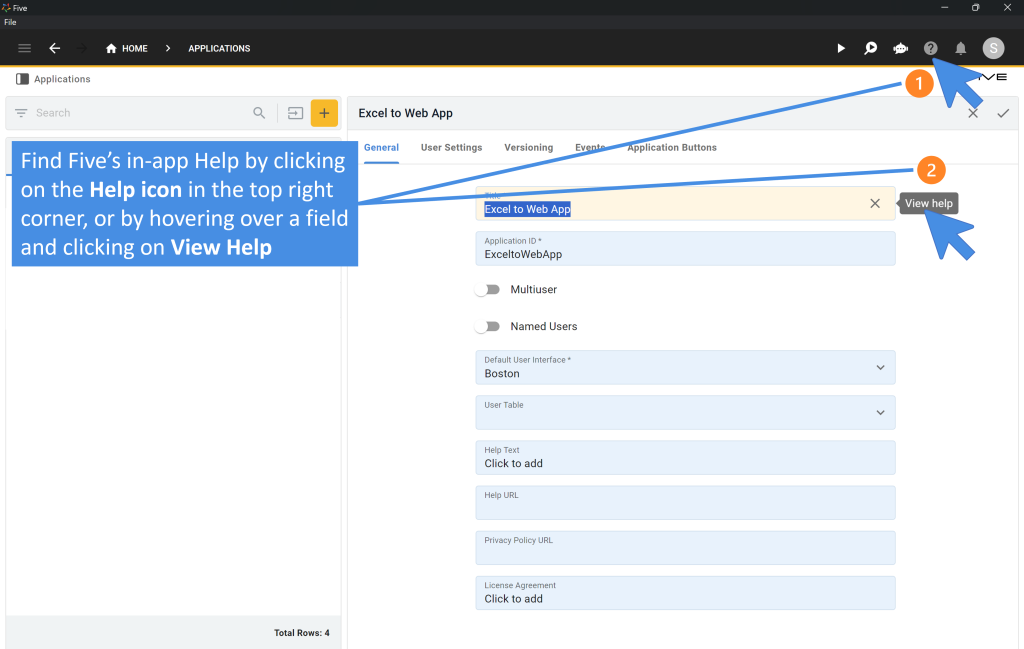
View some of Five’s prebuilt sample database applications:


